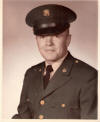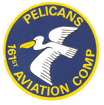 |
|
 |
[TOC] [Origin]
[History] [Remembrance]
[Taps] [Reunion] [Stories]
[Pictures] [Guestbook]
[Links]
Capt. Donald Ray Bryant, 27 June 1966
Capt. Jerry Wayne McNabb, 27 June 1966
Cpl Fredrick Marlton Binder, 27 June 1966
Pvt. Jackie Lee Goforth, 27 June 1966
SP4 Robert D. Anderson, 29 Sep 1967
WO Gerald Leopold Latini, 29 Nov 1967
WO Daniel Scott Steele, 29 Nov 1967
PFC Clearance James Tiffany, 29 Nov 1967
PFC Stephen Forrest Freeman, 29 Nov 1967
PFC Steven Michael Mueller, 27 Jan 1968
Capt. Thomas Tucker Oliver, 2 Feb 1968
SP4 Glenn U. Andreotta, 8 April 1968
SP5 Charles Matthew Dutton, 8 April 1968
WO George Allen Grinnell, 21 July 1969
WO Michael James Kerl, 6 Feb 1971
![]()
Captain Donald Ray Bryant |
 |
Captain Jerry
Wayne McNabb |
 |
CPL Fredrick Marlton Binder |
 |
Pvt Jackie
Lee Goforth |
 |
Person who witnessed this incident said it occurred at the Tuy Hoa airbase. The 161st Huey (UH-1B sn 64-14047) was just leaving the Tuy Hoa airbase, having just refueled. At this point, it had a mid-air collision with another Huey (UH-1B sn 65-09486) belonging the 1/9th Cav of the 1st Cavalry Division. Seems each aircraft was being directed by separate air traffic controllers.
SP4 Robert Douglas
Anderson |
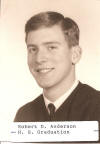 |
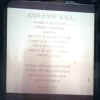 |
Robert Anderson was a crew chief on a Pelican slick (UH-1D sn 64-13836), who was substituting for either Robert Mix or Bob Hendricks . The other crew members consisted of Captain Robert T. Hooker (AC), WO William C. Chellis (Pilot), and SFC Danzel Marcantel (2nd Plt Sgt). During a combat assault supporting the 101st Airborne, a call from the ground requested an emergency Medevac. Captain Hooker took the mission and contacted the ground commander, asking about ground fire in the LZ. The reply was that the LZ was cold. The aircraft landed and Anderson got out to assist in the loading of the wounded soldier. As Anderson was climbing back into his crew position, the aircraft was raked with NVA .51 machine gun fire. One round shattered the windshield, sending Plexiglas into the face of Hooker. Another round wounded Bill Chellis when it passed through his armored seat. The wounded grunt was also hit in the foot and hand (a human finger was later found in the ammo tray). Anderson was hit in the lower groin area severing a vital artery. Marcantel attempted to stop the bleeding with pressure bandages, but the wound was too severe and Anderson bled to death before reaching closest aid-station.
Captain Hooker recommended Anderson for the Silver Star Medal, which was approved by Division and awarded posthumously before his body was shipped home. SFC Marcantel was the accompanying NCO for the body.
Being from California, Anderson was surfer type guy and even had the look. Captain Hooker later told of a conversation he once had with Anderson. When asked why he didn't just stay in California and take his chances with the draft. Anderson's reply was, "Captain Hooker, the Communist won't like surfers."
WO Gerald Leopold Latini |
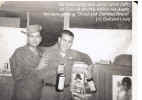 |
WO Daniel
Scott Steele |
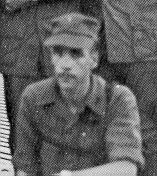 |
PFC Clearance James Tiffany |
PFC Stephen
Forrest Freeman |
 |
On November 29, 1967, the unit lost aircraft (UH-1D sn 65-09955), and its entire crew. The crew’s mission was to be on standby for flare missions. This was a routine mission that rotated among the aircraft and its crew. The crew was called out for a mission, but soon lost radio contact after taking off from Pelican Roost. Several days later, the main cabin section was washed upon the beach, a short distance south of Chu Lai. Speculation was that the crew became disoriented by the moonlight reflecting off the water, became inverted and crashed into the sea. Eventually, the bodies of all four crewmembers were recovered. The pilots were Gerald Latini and Daniel Steele, crew chief Clearance Tiffany and gunner Stephen Freeman.
The following represents several versions by persons that were present at the time of the incident.
Garland Lively:
I think at the time, I was on standby with the Scorpions and was scrambled when we received incoming rounds. We had no sooner returned and began to relax when the rounds impacted and were again scrambled. This routine was repeated a third time. After a crater analysis was performed it was determine that the rounds were from an American 105mm battery. The Lieutenant who surveyed the battery had laid the guns 3200 mils (180 degrees) in the opposite direction and the battery had been firing Harassment and Interdiction (H&I) fire at the rate of two rounds per hour into our compound. Very little damage resulted but I believe this was the night Jerry Latini was killed.
Captain James Mouw:
They (Mouw and CWO Tommy Hall) had installed a search light in the cargo area of the aircraft. (This might mean one of those multi-light contraptions that would light up a football field). They had not had time to train anyone on how to use it. (He did not say weather or not it was intended to be used on that flight) He thinks the light was switched on shortly after takeoff. Being inside the aircraft, it blinded the pilots, which resulted in they crashing into the sea. He and Mr. Hall recovered the main cabin portion of the aircraft the next day.
Captain Donald Long:
I don’t know anything about the searchlight but I do know they were on flare standby and if I’m not mistaken, like many nights, we started receiving incoming rounds. (If I’m not mistaken wasn’t this the night we were receiving H & I fire every 40-45 minutes from arty? I can expand on that at a later time.) I was operations officer so my ops clerk had already alerted them by the time I arrived and they were arriving for the mission when I got there. Mr. Steele was still fairly new and I could see the mixture of excitement and concern in his eyes as he walked by me. It was kind of old hat for Mr. Latini. From that point the following is what I personally observed from the steps of the ops shack.
This I know:
I watched them take off to the north, turn out over the water and head south along the beach. They leveled off at about 800’ and seemed to be doing okay. The next thing I noticed was they had entered what appeared to be a rapid autorotation. I don’t remember any light from the interior...there could have been one but not visible, (now that it has been mentioned I do recall someone had been working on a light project) but they did have on the external searchlight. The descent appeared normal and I watched them all the way down waiting for them to flare. The flare never occurred. Because of the trees on the sand dunes I lost sight of them at about...my guess...50-75’ still descending rapidly. I remember saying... flare, flare, flare! They were at about our southern boundary at that point because they had not been flying more than a minute or so. It was just a few seconds later I heard a loud "THHUUMMP" like a huge barrel would make if it hit the water side-down at a high speed. I know some of our people responded to the scene. I didn’t go right away because I was needed at ops but Maj. Schenker and I were there at first light the next day. I can discuss that visit at a later time. I will say now that Maj. Schenker, one of the good guys, was thinking only of the crew.
I don’t ever recall that they entered clouds and somehow came out of them upside down. Perhaps that was a way to explain why it appeared there was no attempt at a flare. I have always had my theory on that. There is no fact here, just theory but maybe other flying personnel can see why I’ve felt this way. Anyway, as I said, I watched the whole thing and they did not flare. I remember that the sea, for some reason that night, was as smooth as a tabletop...not a ripple...and that is of course very unusual. I also recall that the water there was very, very clear when the sea was like that. You could see down through it quite a distance. So picture the fact that for some reason you have to enter autorotation and you do that. We all know the training said to start your flare at approx. 75’ or so...forgive me IP’s if I don’t have it exact, it’s been a long time. So, as the pilot, you have on the search light, somebody is using it to look at the spot you have picked for touch down. The problem is that the spot is out over the water, the clear water, and since the sea is tabletop smooth, the light looks down through it to the bottom as if the water was not even there. Imagine that the water at that point is 75-100 feet deep. It’s possible that seeing down through the water, making you feel as if you had another 100 feet or so before you needed to flare, would cause you to delay your pitch pull to the point you actually strike the water in full descent rate. Anyway, why else would either of the pilots in the aircraft not flare for the autorotation. You had to hear the big thump to know they hit at full force. Of course, the impact probably rendered them all unconscious and probably initiated the breakup of the aircraft. The water action over the next hours then completed the breakup of the Huey and, as you know, we found them on the beach the next day. Now, if they did have the search light and it somehow got turned on inside during the confusion during the autorotation, that would definitely affect their ability to identify the point at which they should start the flare for autorotation. They would certainly be night blind for a few seconds. Even if it was immediately turned off the pilot’s ability to do the right thing was already affected.
That’s the full extent of what I actually know and what I believe may have been the cause of the fatalities. There is one more thing I know and that is I honestly believe we can discount the "in the clouds and disoriented" theory. They were coming down in perfect autorotation attitude.Ed (Trip) Wilson
I
was pilot in command of the UH-1 assigned to primary flare ship duty the night that Latini
and Steele crashed. Unfortunately, after all these years, I do not remember who was flying
with me as copilot or crew.
As
I recall, we were scrambled to drop flares when mortars (later discovered to be
"friendly" artillery) started dropping inside the perimeter. The weather was
overcast and hazy with very poor visibility. VC were reported to be on or inside the
perimeter. We launched within minutes of getting word to go. Part of the routine on flare
ship duty was to preflight the aircraft before dark and to set all of the switches so that
all that was required was to untie the blades, hit the battery and main fuel switches and
pull the trigger.
After
taking off we found that we could not get to our normal flare drop altitude because of low
ceilings. Operations instructed us to drop anyway to get some light on the compound. We
dropped our load of flares over the next 15 or 20 minutes as we flew as high as we could,
in and out of the bases of the clouds. We almost had a major catastrophe when one of the
flares that were still burning landed only a few yards from a 20,000-gallon fuel bladder.
When our flares were expended, we landed to rearm, and the standby flare ship took off.
After landing, the copilot stayed with the aircraft to help with the reloading and I ran
to the operations shack. On the way to operations, someone fired at me from a distance of
10 or 20 feet. I have always wondered if it was VC or one of our guys with a nervous
trigger finger.
While
I was in operations we heard that the standby flare ship had gone down, so my crew and I
scrambled as soon as possible and started dropping flares over the water. We would get as
high as we could, drop 3 or 4 flares, then spiral down under them to search for 955. On
the third or fourth time we did this we found the wreckage. One of the doors, and a small
piece of the tail boom were floating. It was virtually impossible for me to hold the Huey
at a stable hover over the moving waves with the flares coming down around us. We expended
the remainder of our flares in the same manner, but could not find any more of the
wreckage or any survivors.
After
we landed, physically and emotionally drained, another UH-1 had been loaded with flares
and was on standby. The remainder of the night was uneventful.
We
lost a good crew that night, and I lost a flight school classmate as Mr. Latini and I were
both members of class 66-19.
deltacom@otbnet.com
PFC Steven Michael Mueller |
 |
In late January, 1968, the 161st company area was hit with mortar and rockets. A new guy from the Military Police gunners, took the time to put on and lace up his boots before heading for the bunker. One of the mortar rounds came through the roof of the hooch and he was killed by the explosion.
In October, 1999, I had a conversation with David Czarnecki of Toms River, NJ confirmed this person to be Steven Michael Mueller, who was killed by the mortar coming through the hooch. David went on to say, his MOS was Military Police and went through AIT with Mueller. Upon assignment to Vietnam, a detachment of MP's were to be assigned to the Saigon area. However, on arrival the full detachment was not needed and therefore broken up for individual assignment. Those not given MP assignments were given a choice of an infantry assignment or as helicopter door gunners due to the build up of the 123rd Aviation Battalion.
In May, 2005, I was contacted by William Mueller, the younger brother of Steven Mueller. In an effort to learn more about his brother, he would like to contact anyone who might have known Steven Mueller. If you would like to correspond with William Mueller, just click on his name for his e-mail address.
Captain Thomas Tucker Oliver |
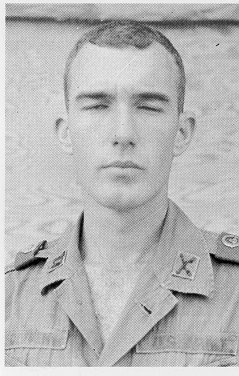 |
 |
Captain Oliver, nickname 'T.T.', was the 1st Platoon Commander at the time of his death serving as Aircraft Commander for UH-1H sn 66-16675. He was, also, on an extended tour of duty after his original DEROS date. During a break in the action with other aircraft, Captain Oliver was standing outside his shutdown Huey. He was struck in the head by a single bullet. It is not known if this was a single sniper round.
WO Langdon Carpenter (Estacada, OR) was the pilot
during this incident and has provided what he recalled from this incident.
I remember that we were taking out resupply to a grunt unit on my AC check ride. We had
our tail rotor cable shot out while trying to take off and I had to set the aircraft down.
Capt Oliver tried to lift the bird but it started to spin again so we shut it down. He was
shot while exiting the aircraft. Then all hell broke lose with the grunts, they were
shooting everywhere. They brought in napalm on the closest tree line which was on the
ships right side. I remember we were on the ground for at least 3 hrs.
SP4 Glenn Urban Andreotta |
 |
SP5 Charles
Mathew Dutton |
 |
These two men, at the time of their death, were members of Company 'B', 123rd Aviation Battalion. They were members, however, of the 161st AHC prior to the reorganization. On this date, they were crew chief (Dutton) and gunner (Andreotta) on a OH-23G Scout helicopter piloted by 1LT Barry Lloyd, and were killed when the aircraft was shot down, crashed and burned. 1Lt Gerald Walker (AC), WO Wallace Poteet (pilot) and Clark Wilson (crew chief) were crew members of a Scorpion gunship that was part of the scouting mission. LT Walker was wounded in the hand by the same .51 cal MG that shot down Scout ship and had to leave the area. 174th AHC Shark gunships and a Dolphin slick arrived on the scene and rescued Barry Lloyd. To read more about this extraordinary rescue, go the 174th web site.
WO George Allen Grinnell |
 |
George Grinnell completed his first tour of duty with 161st AHC as a Warrant Office pilot. We have since learned that George returned for a second tour with B Company, 25th Aviation Battalion, 25th Infantry Division. On July 21, 1969, he is piloting a Cobra helicopter when he was killed as a result of a mid-air accident with a C&C aircraft.
WO Michael James Kerl |
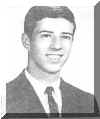 |
During his first tour of duty to Vietnam, Mr. Kerl was a Warrant Officer
pilot in 1967-68 with the 161st AHC. However, he pushed his luck too far during a 'second'
look at Vietnam. He was the oldest of nine children, a very likable guy and we are sadden to learn of his demise.
Between tours Mr. Kerl took a commission and transitioned to the CH-47 Chinook, which he was piloting, at the time of his death. He was posthumously promoted to the rank of Captain.
I would like to include a photo for each of these individuals.
If anyone has such a photo or even a better photo, please pass it along to me.
I will return it after making a copy.
Please send any additional information to John Hastings
via E-mail, or U.S. postal mail to:
John H. Hastings
704 Rosewood Place
Aledo, Texas 76008
